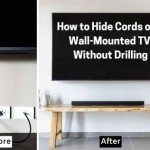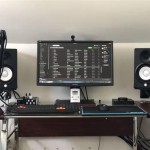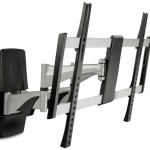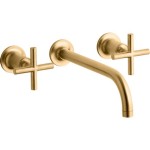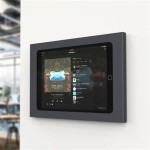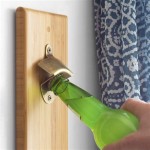Understanding TV Wall Mount Outlet Boxes: A Comprehensive Guide
Mounting a television on a wall offers a sleek, modern aesthetic while maximizing space. However, a clean installation requires careful planning, especially concerning power and signal connections. A crucial element in achieving a professional-looking wall-mounted TV setup is the use of a dedicated TV wall mount outlet box. These boxes provide a recessed space behind the television to house electrical outlets and low-voltage connections, concealing unsightly wires and cables and allowing the TV to sit flush against the wall.
This article will explore the significance of TV wall mount outlet boxes, examining their types, installation considerations, and the advantages they offer over traditional wiring methods. The information presented is intended to provide a thorough understanding for homeowners, contractors, and anyone considering wall-mounting a television.
Why Use a TV Wall Mount Outlet Box?
The primary reason to use a TV wall mount outlet box is to conceal power and data cables. Without a recessed outlet box, the power cord and HDMI cables connecting to the TV would protrude from the wall, preventing the TV from sitting flush against the mounting bracket. This results in an untidy appearance and can also put strain on the cables, potentially leading to damage over time.
Traditional electrical outlets are typically designed to be flush with the wall surface. When a TV is mounted directly over a standard outlet, the electrical plug and any connected cables create a gap between the TV and the wall. This not only looks unprofessional but can also be a safety hazard, as the strained cables are more susceptible to damage and potentially fire. TV wall mount outlet boxes alleviate this issue by recessing the outlets and cable connections, allowing for a cleaner and safer installation.
Furthermore, these boxes often include features to manage cables effectively. They may have knockouts for routing low-voltage cables like HDMI, component video, or network cables, keeping them organized and separate from the high-voltage wiring. Some models also incorporate cable management features like built-in cable ties or pass-through holes, further simplifying the installation process.
The use of a TV wall mount outlet box contributes significantly to the overall aesthetic appeal of the wall-mounted television. By concealing the wiring, the focus remains on the screen, enhancing the viewing experience and creating a more visually appealing entertainment area. This attention to detail is particularly important in modern homes where clean lines and minimalist design are highly valued.
Types of TV Wall Mount Outlet Boxes
Several types of TV wall mount outlet boxes are available, each designed for specific installation scenarios and cable management needs. Understanding the different types is crucial for selecting the appropriate box for a given project.
Recessed Power Outlet Boxes: These boxes are designed primarily to house electrical outlets. They typically include space for one or two standard electrical receptacles and feature a recessed design that allows the TV to sit flush against the wall. Some models also include surge protection to safeguard the television and connected devices from power surges. These are often the simplest and most cost-effective solution for concealing power cords.
Combination Power and Low-Voltage Boxes: These boxes offer the best of both worlds, providing space for both electrical outlets and low-voltage cable connections. They typically include separate compartments for high-voltage and low-voltage wiring, ensuring that the electrical and signal cables do not interfere with each other. These boxes are ideal for installations where multiple devices, such as Blu-ray players, gaming consoles, and streaming devices, need to be connected to the TV. They often feature multiple knockouts or openings for routing HDMI, component video, network, and other low-voltage cables.
In-Wall Cable Management Kits: While not strictly outlet boxes, these kits provide a similar function by allowing cables to be routed through the wall from the TV to a lower location, such as an equipment cabinet. They typically consist of two wall plates and a flexible conduit that is installed within the wall cavity. These kits are particularly useful when the power outlet is located far from the TV or when it is not possible to install a recessed outlet box. However, it is worth noting that this option typically requires a nearby power outlet to supply current to the TV.
Surface Mount Boxes: For situations where recessing an outlet box into the wall is not feasible, surface mount boxes offer an alternative. These boxes are mounted directly on the wall surface, providing a housing for the electrical outlets and cable connections. While they do not offer the same level of concealment as recessed boxes, they are often easier to install and can be a viable option for older homes with limited wall cavity space.
The choice of outlet box will depend on the specific needs of the installation. Factors to consider include the number of devices that need to be connected to the TV, the location of the existing power outlet, the construction of the wall, and the desired level of concealment.
Installation Considerations and Best Practices
Proper installation of a TV wall mount outlet box is crucial for ensuring a safe and reliable connection. Poor installation can lead to electrical hazards, cable damage, and a compromised aesthetic. The following considerations and best practices should be followed carefully.
Planning and Preparation: Before beginning the installation, carefully plan the layout of the TV and any connected devices. Determine the optimal location for the outlet box based on the location of the TV mount and the placement of the other equipment. Ensure that the outlet box is easily accessible for maintenance and future upgrades. This planning phase helps avoid preventable mistakes and potentially dangerous miscalculations.
Safety Precautions: Always disconnect the power supply to the circuit breaker before working with electrical wiring. Use appropriate safety equipment, such as insulated gloves and safety glasses. If you are not comfortable working with electrical wiring, consult a qualified electrician. Working with electricity poses a significant risk to personal safety, and proper precautions are essential.
Wiring Connections: When connecting the electrical wiring to the outlet box, follow all applicable electrical codes and regulations. Use appropriately sized wiring and connectors. Ensure that all connections are secure and properly insulated. Pay close attention to grounding requirements to prevent electrical shock hazards. Improper wiring can lead to electrical fires and other dangerous situations.
Cable Management: Route the low-voltage cables carefully to avoid tangling and interference. Use cable ties or other cable management accessories to keep the cables organized and secure. Avoid bending the cables excessively, as this can damage the conductors and degrade the signal quality. Proper cable management not only improves the appearance of the installation but also enhances the performance and longevity of the cables.
Box Installation: When installing a recessed outlet box, carefully cut the opening in the wall to the correct size. Ensure that the box is securely mounted to the wall studs or drywall using appropriate fasteners. When installing a surface mount box, use appropriate anchors to secure the box to the wall surface. A secure mounting is essential for preventing the box from becoming dislodged or damaged over time.
Testing and Inspection: After completing the installation, carefully test all of the electrical outlets and cable connections to ensure that they are working properly. Inspect the installation for any signs of damage or potential hazards. If you encounter any problems, consult a qualified electrician before using the TV. Testing ensures that all elements of the installation work properly and safely.
Compliance with Codes: All electrical work must comply with local electrical codes and regulations. Check with your local building department to determine the specific requirements in your area. This may include obtaining permits and inspections. Compliance with codes ensures that the installation is safe and legal.
By following these installation considerations and best practices, you can ensure a safe, reliable, and aesthetically pleasing TV wall mount installation. If ever in doubt, consult a licensed professional to avoid any unforeseen issues.

Recessed Tv Wall Box For Power And Data New Or Old Construction White Conference Table Boxes

Low Profile Recessed Tv Box For Shallow Wall Outlet Flat Screen Tvs Mount White

Tv Wire Boxes They Are Both Safe And Appealing

Arlington 8x10 Tv Box For Power Low Voltage

04mm Rp04 Recessed Wall Box With Built In Cable Management System Matchmaster Digital Tv Antenna

Installing Recessed Electrical Outlets With Surge Protection For Wall Mounted Tv Youtube

04mm Rp03 Recessed Wall Point With Built In Cable Management System Black Matchmaster Digital Tv Antenna
Sync Box Solves Slim Tv Wall Mounting Blues Inside Ci

Arlington Recessed Tv Box For Power And Low Voltage 2 Gang

Arlington Tvbr2505k Flat Screen Tv Behind The Wall Wiring Kit

